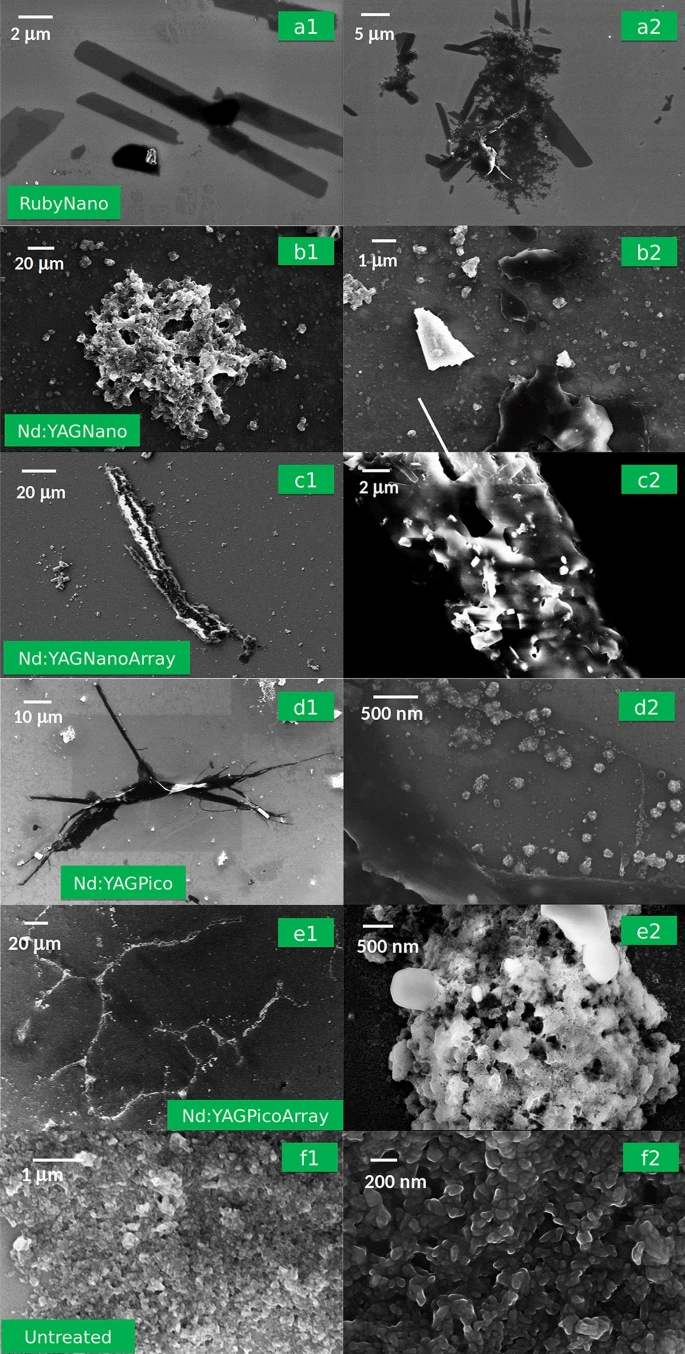In an article recently published in Scientific Reports, researchers explored the removal of permanent tattoos and compared nano and picosecond laser treatments.

Study: Comparative treatments of a green tattoo ink with Ruby, Nd:YAG nano- and picosecond lasers in normal and array mode. Image Credit: damiangretka/Shutterstock.com
Tattoo Industry – Leaving a Mark
In the United States, tattoo businesses are thriving and show no signs of declining. Increased popularity has meant that body ink has become considerably more widespread.
However, a noticeable percentage of people report some levels of regret following their tattoos, such as feeling like the tattoo does not fit their current personality or it losing its meaning. In these cases, people either go for a tattoo cover up or complete removal.
Laser Treatment – A Ray of Hope
Due to the global growth of tattooing, tattoo erasure has also grown in popularity. Laser treatments are effective for undesired tattoos, with the most common method involving laser treatment. However, some colors, such as green, are deemed "recalcitrant" to the therapy.
The tattooed pigment is held in the skin's lowest layer. Ink particles are introduced with needles into varied thicknesses of the bottom layer when tattoos are placed.
Essentially, lasers erase tattoos by using a high-intensity laser beam to break apart the pigment hues. All laser wavelengths are absorbed by black tattoo ink, rendering it the simplest color to fix.
How Do These Lasers Work?
The relatively shallow coatings of ink are erased first, followed by the deeper levels. Multiple treatment options are available to penetrate all of the varied levels of pigment in a tattoo.
When compared to shading tattoos with a lesser density of ink, a tattoo that is very black or bold will demand additional procedures to remove the pigment.
Other colors could only be treated with certain lasers, which are determined by the pigment color. The strength of the laser beam is great enough to fracture the ink since it is so fleeting. However, since the energy is only in the skin for a brief time, there is little risk of skin harm.

Figure 1. UV–Vis spectra of the GC ink dispersion upon laser treatments: red solid line = nanosecond ruby laser, violet solid line = nanosecond Nd:YAG, violet dashed line = nanosecond Nd:YAG with array, light blue solid line = picosecond Nd:YAG, light blue dashed line = picosecond Nd:YAG with array. In the inset, the same set of spectra is plotted along with the non-treated sample, reported with a green solid line. Cecchetti, D., Bauer, E., Guerriero, E., et al. (2022).
The success of tattoo removal is typically color dependent, and it is measured by contrasting the discoloration of the inked skin following the initial treatments.
Several types of lasers, including alexandrite, Ruby & Nd:YAG (neodymium-doped yttrium aluminum garnet) lasers, have been reported to effectively erase black tattoos; although green tattoo designs are the most resistive.

Figure 2. SEM images of GC ink treated with different lasers: (a1,a2) RubyNano, (b1,b2) Nd:YAGNano; (c1,c2) Nd:YAGNanoArray; (d1,d2) Nd:YAGPico; (e1,e2) Nd:YAGPicoArray, and untreated: (f1,f2). Cecchetti, D., Bauer, E., Guerriero, E., et al. (2022).
Important Findings of the Study
When dealing with multicolor tattoos, a common side effect of laser therapy is variable bleaching, which leaves residuals of various colors to varying degrees, resulting in an unattractive final look.
The goal of this study was to determine the efficacy of five laser treatments for removing a green print water dispersion. They employed Nd:YAG picosecond lasers, as well as Ruby nanosecond and Nd:YAG laser beams, which are most often used lasers in dermatological clinics for tattoo removal.
Nd:YAG pico- and nanosecond laser in array as well as normal mode, and Ruby nanosecond lasers, while maintaining the cumulative irradiation energy constant. The treated materials' UV–Vis spectroscopic analysis shows that the Nd:YAG picosecond laser is the most active, while the Ruby nanosecond lasers are the least effective.
Future Work
Lasers may enable more effective therapy for neurological disorders, dermatological issues, and other technical issues in clinical settings in the future.
The objective of the study is to make laser tattoo removal procedures safer and more effective than present approaches. While the approach has not changed much in the previous 50 years, it may actually lower the cost and increase its accessibility to those who require it.
Reference
Cecchetti, D., Bauer, E., Guerriero, E., et al. (2022). Comparative treatments of a green tattoo ink with Ruby, Nd:YAG nano- and picosecond lasers in normal and array mode. Scientific Reports. Available at: https://doi.org/10.1038/s41598-022-07021-w
Disclaimer: The views expressed here are those of the author expressed in their private capacity and do not necessarily represent the views of AZoM.com Limited T/A AZoNetwork the owner and operator of this website. This disclaimer forms part of the Terms and conditions of use of this website.